Webshop
My page
FermentationFermentation is a way of processing and preserving foods by the of means micro-organisms. |
Introduction
An old method for preservation of foodsFermentation is not a new phenomenon but an old method to preserve all kinds of food by the means of little microorganisms – a preservation method that has been known and practiced for thousands of years amongst almost all cultures of the world. From a time where people had no means of canning or refrigerating foods, fermentation along with salting, drying and smoking, was a convenient way of prolonging freshness and stability of foods beyond its natural freshness. Fermentation made it possible to preserve nutritious foods sources well into the the long winter months when fresh foods were sparse and not enough. Fermentation has also been used a way of processing fresh foods that were otherwise inedible but gained pleasant and palatable qualities from fermenation. This is the case with olives that are oftentimes fermented to remove the natural bitterness. Almost every culture on earth have developed and had their own unique traditions for making fermented foods and thereby exist many recipes and specialities today. Not seldom have these fermented foods even been associated with health claims amongst people who consumed them and sometimes used for medical purposes. The main purpose of fermentation has however always been to preserve and prepare foods and produce palatable specialities. The tradition for fermentations of fruits and vegetables seems to originate from eastern Asia from where it has spread to Europe through Russia. The most well-known traditions are probably sauerkraut, kimchi and fermented olives - just to name a few - but there lots more. In fact, there are endless choices as to which fruits and vegetables you can ferment and combine to develop your own unique flavours and recipes. Below is a link to a list of some of the world’s fermented foods and their origin. You might find you already know many of them but perhaps never thought of them as fermented foods: https://en.wikipedia.org/wiki/List_of_fermented_foods Popularity revived – health is the new blackIn recent years, fermentation has found its way back into both fine and ordinary cuisines as scientist are beginning to uncover a correlation between the microorganism that live in out gut and our overall health. Not only do beneficial microorganisms nurture our gut environment, they thereby nurture our entire body with nutrients that lay the grounds for physical and mental well-being. Several studies are now suggesting that chronic diseases like ADHD, Alzheimer’s, Parkinson’s and diabetes, might be influenced by the composition of the gut flora and symptoms could be relieved to some extent by healthy lifestyle and healthy food choices. Nurturing the gut with pre- and probiotic rich foods like fermented foods helps to keep our digestive tract healthy and replenish our gut flora with healthy microorganisms. Some claim to have tested a portion of sauerkraut (150 g) and found it to contain as much as 10 trillion bacteria which is far higher than any other food or food supplement. Microbes are everywhere in our surroundings, they live on us and inside of us and they are especially important in our digestive tracts where they help our bodies digest and absorb nutrients, make vitamins, antibiotics, strengthen our immune systems and protect us from pathogens. When we consume fermented vegetables, we nurture our bodies with species of beneficial microorganisms and easy-to-digest vegetables that can help us maintain a healthy gut. As an extra bonus, the microbes have pre-digested the fibres in the vegetables by breaking down the cell walls and thereby making nutrients more available to us. Vegetable fermentation is therefore becoming so much more than just a convenient way of preserving foods – it is health, traditions and beautiful food experiences yet to be discovered by many of us. |
What is fermentation?
What is fermentation?Fermentation can be defined as a metabolic process where microorganisms break down carbohydrates into organic acids and alcohol, while secreting gasses and different substances in the process. The microorganisms responsible for the fermentation process is a mix of bacteria, fungi and yeasts that are also naturally occurring everywhere in the world – even on fruits and vegetables and it is their presence we depend upon when we ferment fruits and vegetables. The moment a fruit or vegetable is picked from its source of life, microorganisms gradually begin to break it down and produce various substances as process. This normally happens in the presence of oxygen and most of us know this process as a foul-smelling rotting process where fruit and vegetables turn slimy and develop patches of moulds. When we ferment vegetables with microorganisms, something quite different happen because we provide an oxygen free environment. Only anaerobic bacteria thrive under such conditions and these are mainly healthy lactic acid bacteria. When we provide an oxygen-free environment the beneficial bacteria get a head start in the fermentation process and this keeps unwanted bacteria from developing and contaminating the vegetables. The result is a much different process where fruits and vegetables are preserved rather than going through a rotting process, as it would normally happen in the presence of oxygen. Most importantly when we ferment, is therefore to provide an oxygen-free environment by ensuring what we ferment is submerged in a brine throughout the entire fermentation process. Brine is usually created either by salting fruits and vegetables and thereby drawing out their juices - or simply making and adding a vegetable brine. If we fail to ferment them in an oxygen free environment, ferments usually develop patches of mould and end up being unsuitable for consumption. The fermentation processA fermentation process is set off when microbes begin to digest sugars that are released from the vegetables into the brine as a result of salting, crushing and slicing vegetables fibres. These beneficial microbes convert carbohydrates into the following substances: Lactic acid bacteria convert sugars into lactic acid. As lactic acid bacteria convert sugars into lactic acid, they thereby steadily cause acidity to rise in the brine. The longer it ferments, the more acidic it becomes. This is very fortunate since acidity prevents unwanted pathogenic bacteria from growing and getting a foothold. Thus, ferments with a pH level under 4,6 is usually considered to be free of pathogens and safe to consume. Indeed bad microorganisms can also make their way into ferments and given the right conditions they will profilerate on the sugars too. Mould is an example of a pathogen that could make the ferment unsuitable for consumption as it produces toxins. We are not interested in getting any of these pathogens into to our ferments nor our bodies where they act as toxins and cause disease. Fortunately, this is easy avoidable by controlling the ferment and providing optimal conditions for the beneficial microorganisms. The lactic acid and acetic acid made by the microorganisms preserves the fruit and vegetables in a way that keeps them fresh for weeks, months or even years, provided they are stored under the right conditions. From time to time we hear stories of decades old ferments being found and still seem to be perfectly safe to eat. |
Theory
|
To successfully make fermented foods, it is important to know the basics behind the process. |
The bacteria
Three bacterial phasesThere are three bacterial phases in a fermentation process caracterized by what species of bacteria dominate at a given time in the process:
Thus, all it requires be successful at fermentation is to provide best possible conditions for the lactic acid bacteria and this is done by securing the right temperatures, enough sugars and enough brine to keep the ferment oxygen free. The better lactic acid bacteria thrive from the onset of the ferment the faster the brine acidifies and prevent pathogens from getting a foothold. Since most lactic acid bacteria thrive around 21°C, that is the optimal temperature for fermentation. If you ferment at a few degrees lower, this will slow the microbial processes to a point where fermentation is slowed and might affect the quality of the result. For this reason, it is vital you check the temperature and ensure it is fairly constant where you ferment it. A temperature range between 18 – 22°C would be ideal for the first phase of fermentation where Leuconostoc mesenteroides is active, while a temperature above 22°C serve Lactobacillus species that are active in the later stages of the fermentation better. Your ferment would therefore benefit from being moved to a warmer place with temperatures up to 30°C - after 5-7 days into the fermentation. Just keep in mind – the higher the temperature is the faster it ferments and the more acidic it gets. We recommend you leave the fermentation jar on the kitchen counter for the first 5-7 days for the first phase and the move it to the top of the fridge. This is usually a nice and warm spot for the fermentation to progress. Lower temperatures slow fermentation and you must wait longer for the same result. If you provide the prefect temperatures you can actually eat it after only 5-7 days whereas at lower temperatures, you must wait 2 weeks for it to reach he same stage. However even when you provide the optimal temperatures, we recommend you ferment it for at least 3-6 weeks. The probiotic content will a lot higher then and flavours more distinct but the choice is yours. The fermentation process is complete when no more bubbles rise to the surface of the brine and that usually happens after 3-6 weeks. Store the ferment in the fridge as it is - or in agents like vinegar and herbs or oil and herbs. It can stay stable for month under these conditions. Apart from vegetables - a successful ferment contains quite a bit of lactic acid, carbon dioxide, small amount of alcohol, acetic acid, propionic acid and aromatic esters. Aromatic esters form in the presence of acids and alcohol and contribute with unique flavourings. |
Dry salting
Dry saltingPreparing fruit and vegetables for fermentation by dry-salting means you sprinkle them with salt to extract sugars and juices and use it as a brine. No extra water is added it. The salt will rapidly draw water from the vegetables by osmosis and thereby produce enough juice to submerged the vegetables in the fermentation jar. Make sure to distribute and massage the salt evenly into the vegetables as an ueven distribution could make the result less successful. For 1 kg of vegetables - use 20-40 g of salt. When you dry-salt vegetables, there are two ways of doing it depending upon what sort of vegetables you are preparing:
No matter how you salt, when the vegetables are packed into the jar as descirbed above (only fill up the fermentation jar by 75%) - finish off by placing either clean cabbage leaves on top, a clean cheese cloth or piece of cheese mat. Then lay weighing stones on top to hod everything down. It is very important to weigh the vegetables down under the brine as they will otherwise rise to the surface and be exposed to oxygen. If you have no fermentation stones at hand, use a glass or anything you can think off to will weigh the vegtables down as long as it is clean and made from glass or stoneware. Metal and other materials can corrode and contaminate the brine due to presence of salt and acids. We do not reccomend you ever it in combination with fermented foods. |
Brine saltning
Brine saltingSome vegetables, when you salt them, do no give off enough juices to make a brine fast enough to keep the vegetables in an oxygen-free environment. This mostly applies to when you ferment whole vegetables like carrots, cucumbers or whole cabbage heads. To ferment whole vegetables, you need to make a salt brine to submerge them in and then gradually will the salt extract sugars and juices from the vegetables just as when you dry-salt - it just takes a litte longer.
Most vegetables ferment well in a 12,5% to 20% saturated brine and the microorganisms thrive just the same as they do when you use the dry-salting method. |
The salt
SaltWe add salt to fruits and vegetables to extract the juices and sugars and form a brine that will nurture microorganisms. The easy accessible sugars in the brine enables the lactic acid bacteria to rapidly multiply and secrete lactic acid which ensures a successful result. Adding too much salt however, can also inhibit the activity of the lactic acid bacteria since not all species are tolerant to high levels of salt. Therefore, it is important not to salt too much but find the perfect balance. The adding of salt usually extracts enough juice from the cut and sliced vegetables to form a brine that submerge them completely in the fermentation jar. Regular salt is perfectly alright to use if it has no additives or anti-caking agents in it.
How much salt do I add?Never salt the vegetables with more than 1,5 to 2,5% of the total weight of the vegetables. Adding higher amounts of salt can inhibit the growth of some species of lactic acid bateria that are not quite as tolerant to high levels of salt as are some pathogenic microorganism. If you aim for 1,5 - 2,5% salt you only moderately inhibit L. mesenteroides that are active in the beginning of the fermentation process. Remember it is not the salt content that prevents pathogens from getting a foothold, it is the acidic environment created by the lactic acid bacteria. Therefore, it is important to ensure saltiness does not compromise the growth of beneficial microorganisms. We recommend you never add extra water to the brine as it dilutes the density of sugars and drives out small amounts of oxygen that can be beneficial to Leuconostoc mesenteroides. If you need to add more liquid to cover the vegetables, add no more than 2-4% water. Should you for any reason wish to use less salt, you can do so by making a brine from stalk cellery juice and add a probiotic starter culture to it. |
Fruits
FruitsFruits contain more sugars than most vegetables and fermentation with fruits therefore tends to turn out more like an alcohol fermentation rather than a lactic acid fermentation. If you want to ferment fruits, we recommend you add a starter culture with lactic acid bacteria to direct the process more towards a lactic acid fermentation. It is also a good idea to mix fruits and vegetables in the same ferment as that will naturally reduce the sugar content and promote better lactic acid fermentation. Read more under the starter culture section. |
Starter cultures
Starter culturesA starter culture is a mix of lactic acid bacteria that can be added to the vegetables to ensure a high probiotic content right from the onset of the fermenation and thereby also fast drop in pH that inhibts the growth of pathogenic microorganisms. It is optional and essentially not necessary to use starter culture because the beneficial microorganisms are already present on the vegetables but we can never really know for sure how many nor which species are present. It depends upon in which soils the vegetables have grown and how they have been handled. When we base fermentations on the development of whatever microorganisms are naturally present and hope for the best, it is famously called wild fermentation. By adding starter culture, you super-charge the brine with probiotic content and thereby also control what species will dominate right from the onset of the fermentation through to the end. This makes the result predictable and consistently good every time Chose a starter culture with a combination of species that are beneficial to the fermentation process and suit your preferences. You might have preferences as to which species you want to develop in you ferments, as all species have different properties and you will find there are many different starter cultures on the market made for vegetable fermentation. Some contains a few species whereas others contain a more complex mix. They are usually freeze dried powders and very easy to use. Alternatively to freeze dried starter cultures, you can also use a probiotic rich culture like water kefir or brine from a previous ferment to culture the vegetables. Use them only if they are not too acidic as this usually indicates a high content of Lactobacillus species while Leuconostoc mesenteroides are low. This could make the vegetables less crunchy and that is problematic if you are aiming for just that. Regardless of which starter culture you choose: If you for any reason prefer to use less or no salt in your vegetables, make some juice from stalk cellery and use it as a brine to submerge the vegetables in. Always add a starter culture to the juice. The sugars in the stalk celery juice feeds the beneficial bacteria and the high probiotic from the starter culture super-charge the brine and inhibits the development of pathogens. Dissolve the starter culture in the stalk celery juice (must have room temperature) and dissolve it well. Leave it to sit on the side for 20 minutes, then add the juice to the fermentation jar to cover the vegetables. Make sure they are fully submerged in juice and carefully press own on the vegetables to eliminate any airpockets. Put a cabbage leave or piece of cheese mat on top, then a weight to hold everything down under the surface. Seal the jar and ferment as when fermenting with salt. Fermenting fruits with starter cultureFruit contain a lot more sugar than most vegetables and fruit fermentation therefore tends to develop more into an alcohol fermentation rather than a lactic acid fermentation. To direct the process more towards a lactic acid fermentation we recommend you add starter culture to increase the probiotic content. It is also a good idea to mix fruit and vegetables to reduce the sugar content and enhance lactic acid fermentaion. |
Best Practice
|
It is fun, easy and requires very little time and effort to ferment vegetables at home. The hardest part is patiently waiting for the result but is usually worthwhile the wait once you taste how good it is. You can ferment and combine all kinds of vegetables, fruits, seeds and herbs. We recommend you always use fresh organic fruits or vegetables for fermentation. Note, fruits contain more sugar and therefore tend turn out like more of an alcohol fermentation rather than a lactic acid fermentation. If you want to ferment fruits, we recommend you always add a starter culture with lactic acid bacteria to promote lactic acid fermentation rather than alcohol fermentation. Please read under the starter culture section. Below is a simplified overview of the preparation process - for more details, read on.
|
Basic rules
Rules of thumb
|
Hygiene
HygieneBe mindful of hygiene when you ferment fruits and vegetables. No need to be obsessed, just be aware that unwanted microorganisms are everywhere and you do not want them in your fermentation jar but since good microorganisms greatly outnumber the bad ones in occurance, keeping normal standards of cleanliness is usually enough. Use only healthy pieces of fruit and vegetables. Wash your hands with soap and rinse them thoroughly if you plan on using bare hands to cut and handle the vegetables – otherwise, use food safe plastic gloves. These can be an advantage too if you are going to massage salt into cabbage and have scratches on your hands. Be aware that a ring or similar cannot be cleaned sufficiently. If you wear a ring you must use plastic gloves. Make sure all equipment and especially the fermentation jar is clean. Be careful not to introduce unwanted bacteria to the ferment from fingers or forks during the fermentation process. |
Useful tools
Sources of inspiration
Sources of inspiration
|
||||||||||||||||||||||||||||||||||||
Problem and solutions
Trouble shootingIf the beneficial bacteria do not thrive during the fermentation process the result might be less than optimal. Should a white film appear on the surface of the brine and likewise, a white gritty layer on the bottom – This is alright. This is a by-product of yeast activity. It often occurs if the vegetables are not fully submerged in brine or if the fermentation jar allows air in. Here is a list of potential problems:
|
Recipes
RecipesIn this section we give you all of our favorite recipes and the last section provides links to other websites for more recipes. Be bold and play with it - fermentation is fun. Try to ferment what is in season, combining vegetables, herbs and fruits to create unique seasonal food experiences and know that, most vegetables taste quite different and so much better when they are fermented. Enjoy fermented vegetables as delicious side dishes to compliment other dishes. The sour taste goes very well with red meat and heavy dishes. If you are new to fermented vegetables, we recommend you introduce them to your diet gradually as the probiotic content is very high and your body might need some getting used to it. Start with a tiny bit and work your way up. |
Part 1
Sauerkraut

![]()
Sauerkraut
|
||||||||||
Kimchi

![]()
Kimchi
|
||||||||||||||||||||||||
Pickles

![]()
Pickles
|
||||
Piquant Hummus

![]()
Piquant hummus
|
||||||||
Part 2
Broccoli

![]()
Broccoli with herbs
|
||||||||||
Beetroot kvass

![]()
Beet root kvass
|
||||||||
Chutney

![]()
Chutney
|
||||||||
Salted cucumber

![]()
Salty Gherkins
|
||||||||
Sources of inspiration
RecipesIn this section we give you all of our favorite recipes and the last section provides links to other websites for more recipes. Be bold and play with it - fermentation is fun. Try to ferment what is in season, combining vegetables, herbs and fruits to create unique seasonal food experiences and know that, most vegetables taste quite different and so much better when they are fermented. Enjoy fermented vegetables as delicious side dishes to compliment other dishes. The sour taste goes very well with red meat and heavy dishes. If you are new to fermented vegetables, we recommend you introduce them to your diet gradually as the probiotic content is very high and your body might need some getting used to it. Start with a tiny bit and work your way up. |
Salted cucumber
RecipesIn this section we give you all of our favorite recipes and the last section provides links to other websites for more recipes. Be bold and play with it - fermentation is fun. Try to ferment what is in season, combining vegetables, herbs and fruits to create unique seasonal food experiences and know that, most vegetables taste quite different and so much better when they are fermented. Enjoy fermented vegetables as delicious side dishes to compliment other dishes. The sour taste goes very well with red meat and heavy dishes. If you are new to fermented vegetables, we recommend you introduce them to your diet gradually as the probiotic content is very high and your body might need some getting used to it. Start with a tiny bit and work your way up. |


















































































































































































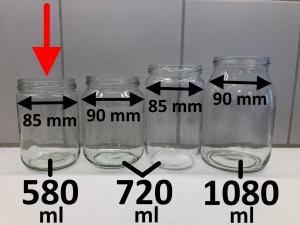
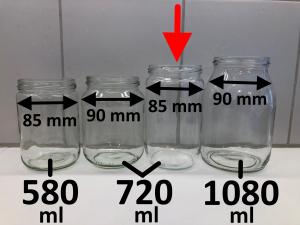
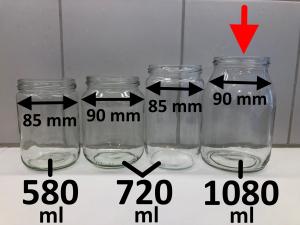
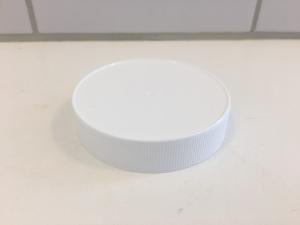






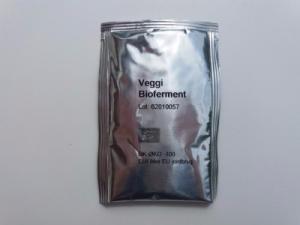

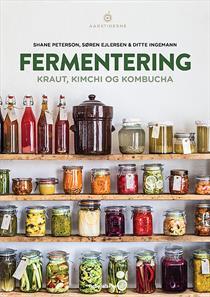
 9/0
- Visitors: 1502144 - 1
9/0
- Visitors: 1502144 - 1